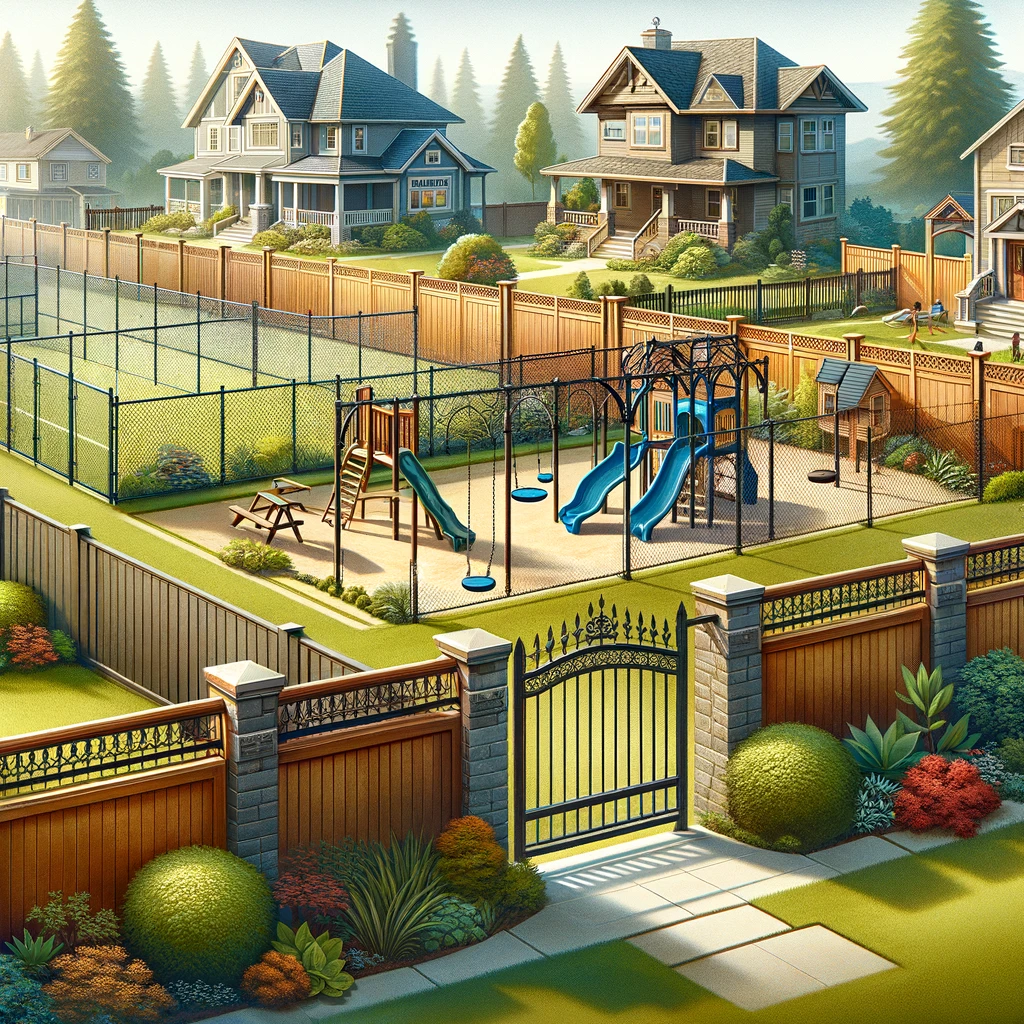
In the world of property management and ownership, selecting the right fence is a decision that blends aesthetics, function, and budget. Fencing can define your home’s curb appeal, secure your property, and provide privacy. With a plethora of fencing options available, understanding the nuances of each is crucial for making an informed choice. This guide delves into the various types of fences, materials used, and their primary uses to help you find the perfect boundary for your space.
Fencing refers to a structure that encloses an area, typically outdoors, and is constructed from posts connected by boards, wire, rails, or netting. Beyond its functional role in security, privacy, and marking property boundaries, fencing also plays a significant aesthetic role, contributing to the overall look and feel of your property.
Fences can be categorized based on their construction material, design, and purpose. Here’s a breakdown of the most common types:
Made from woven steel wire, chain link fences offer durability and security. Ideal for residential properties, playgrounds, and sports fields, they provide a secure boundary without obstructing views. Their cost-effectiveness and ease of installation make them a popular choice.
Designed to prevent unauthorized access, security fences are made from strong materials like steel or aluminum. They often feature spikes or barbed wire and are used around commercial properties, industrial sites, and high-security areas like prisons.
This type of fencing is used to contain livestock or wildlife on ranches or game reserves. Typically made from wood, wire, or metal, these fences are designed to be sturdy and durable, with the height and material dependent on the animals being contained.
A blend of aesthetics and functionality, Design Master fencing is crafted from metal and is used in both residential and commercial spaces. Its versatile designs range from simple and elegant to intricate patterns, offering both security and a decorative element.
Wrought iron fencing is renowned for its strength, durability, and classic beauty. It’s often used for ornamental purposes around homes, gardens, and historical sites. While offering security, its open design does not provide much privacy.
Constructed from materials like wood, vinyl, or composite, privacy fences are designed to offer a high degree of privacy. They are commonly used in residential areas, surrounding backyards or pools, where seclusion is desired.
Primarily used in agricultural and rural settings, barbed wire fences are designed to contain livestock. The sharp edges deter animals (and people) from crossing the boundary, providing a cost-effective, if less aesthetically pleasing, fencing solution.
Fence arches aren’t a type of fencing per se, but an architectural feature that can be incorporated into fence designs for aesthetic appeal. They are commonly used in gardens and pathways, adding a decorative touch to the fencing structure.
The material of your fence plays a significant role in its appearance, durability, maintenance requirements, and cost. Here’s a look at the most common fencing materials:
Installing a fence can be a DIY project or done by professionals, depending on the complexity of the design and the materials used. Proper installation is crucial for the longevity and effectiveness of your fence. Maintenance varies by material, with wood requiring regular treatment and metal needing rust prevention measures.
Choosing the right fence for your property involves considering your needs, the characteristics of your property, and your budget. Whether you prioritize security, privacy, or aesthetic appeal, there’s a fencing solution that fits your criteria. Understanding the types of fences, materials, and their uses is the first step in making an informed decision that enhances the value and security of your property.